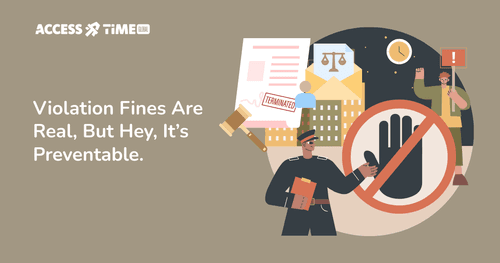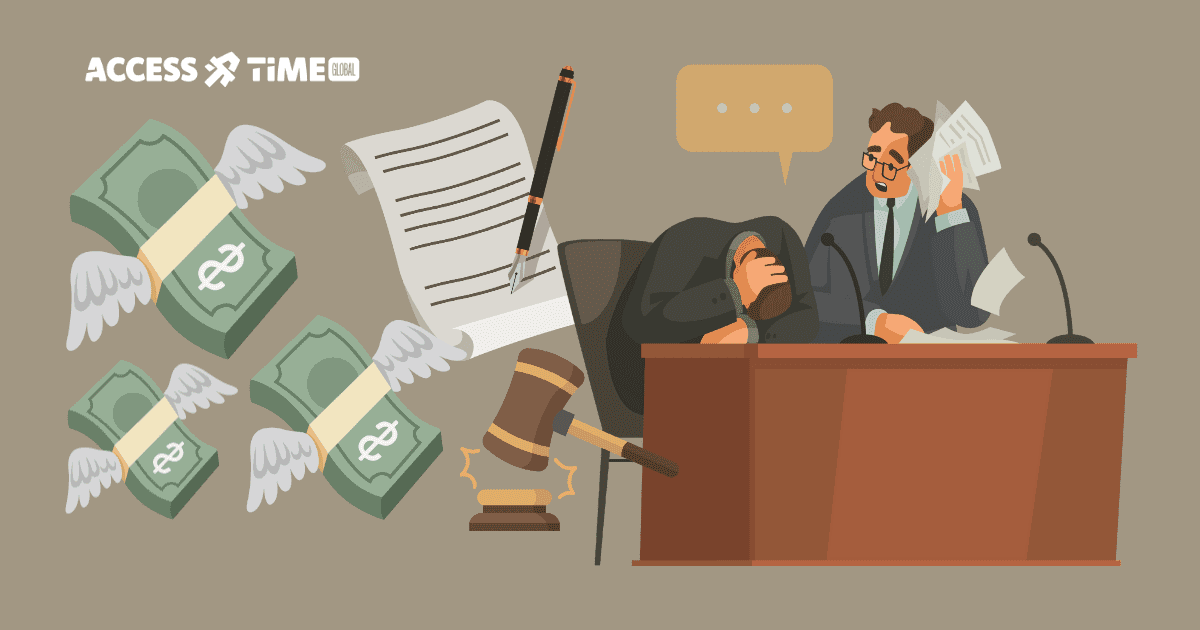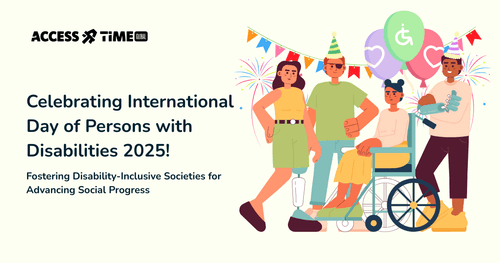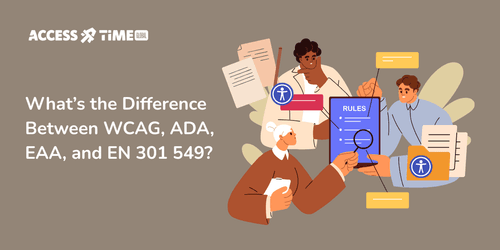Violation Fines Are Real, But Hey, It's Preventable
Prasaja Mukti - Accessibility UX Writer
●●
What businesses risk when ignoring accessibility laws, and how to fix it before it’s too late
Of course, you’re running a successful online business. The site’s been live for years, customers are buying, support tickets are under control, and you’ve just pushed a beautiful new design update.
Everything looks good.
But then, without warning, your legal team forwards you an official complaint.
You’re being sued for digital discrimination.
The claim? Your website violates accessibility laws. A user with a disability couldn’t complete a transaction because your site was built without them in mind. Now you’re facing potential fines, legal fees, and a requirement to overhaul your entire digital experience under court supervision.
You’re not a bad person, of course. You didn’t intend to exclude anyone. But you also didn’t realize that “invisible” barriers in your design could be considered a civil rights violation. Making your product accessible is also about doing right by the people you serve. You have a chance to include more users, open more doors, and create more equitable access to what you’ve built.
Welcome to the very real (and rapidly growing) world of accessibility enforcement.
Regulations Are Tightening Worldwide Accessibility is no longer a “nice to have.” It’s a legal obligation across many parts of the world, with clear consequences for those who fall short. Here are some of the key frameworks businesses must pay attention to:
- ADA (Americans with Disabilities Act) in the United States. This is the most litigated accessibility law, with thousands of digital lawsuits filed annually.
- AODA (Accessibility for Ontarians with Disabilities Act) in Canada. Companies with more than 50 employees must comply—or risk fines of up to $100,000 per day.
- EN 301 549 in the European Union. This applies to digital services, especially for public sector contracts, and defines the minimum accessibility requirements.
- EAA (European Accessibility Act) across EU member states. Taking full effect in 2025, the EAA extends accessibility obligations to private businesses offering digital products and services, including e-commerce, banking, e-books, and transport apps. Non-compliance could result in market access restrictions and penalties, depending on the country.
And that’s just the tip of the iceberg. Similar laws exist in Australia, the UK, and Asia. Whether you're operating locally or globally, there’s a growing web of legislation watching how your digital products behave and whom they include or exclude.
The High Cost of Inaccessibility Accessibility violations aren’t hypothetical. Businesses across industries have already felt the consequences.
Financially, operationally, and reputationally.
Let’s break down the most common violations that lead to legal trouble:
Missing alternative text
Screen readers depend on alt text to describe images. When it’s absent, blind users are left in the dark. Lawsuits often target e-commerce sites where product images lack descriptions, making it impossible for blind users to shop independently.
Keyboard-only navigation issues
Some users rely entirely on a keyboard to interact with websites. If your site traps users in form fields, skips important buttons, or breaks tab navigation, that’s a red flag and a potential lawsuit!
Color contrast failures
Low contrast might be trendy, but it can render text unreadable for users with visual impairments. Failing to meet WCAG’s contrast ratios is a top issue cited in legal claims.
Inaccessible PDFs or documents
Offering downloadable forms, invoices, or reports? If those files can’t be read by screen readers, that’s another common reason businesses are taken to court.
These aren’t theoretical risks. They are well-documented triggers in thousands of lawsuits filed every year. And contrary to common belief, these cases are not just aimed at tech giants or global retailers. Small businesses are increasingly targeted precisely because they’re seen as easier to win against.
What Happens When You Get Sued

Let’s be blunt. Accessibility lawsuits are expensive, stressful, and disruptive.
First, there’s the legal cost. Even a straightforward case that settles quickly can run into tens of thousands of dollars. If the case goes to court, you’re looking at legal fees between $50,000 and $200,000, or more.
Second, there’s the settlement itself. Many accessibility cases settle for amounts ranging from $10,000 to $75,000. But settlements often include required accessibility upgrades, audits, and monitoring, costs that stack up quickly.
Third, and perhaps most damaging, is the reputational fallout. No one wants their brand associated with discrimination. Even if the issue was unintentional, the narrative is hard to control once it’s public. Accessibility lawsuits often attract local press coverage, viral social media posts, or even public shaming by advocacy groups. And if you work with government or public institutions? A non-compliant website could disqualify you from contracts altogether.
Why Prevention Is Cheaper Than Reaction
There’s a silver lining to all this. Accessibility violations are almost always preventable. But prevention requires awareness, tools, and a willingness to act before legal trouble forces your hand.
That’s where
Access Lens (beta)
comes in.
Access Lens is built to help you spot legal vulnerabilities in your digital product, before they land you in court. It’s an automated accessibility audit tool that scans your website for common compliance issues, then gives you clear, actionable feedback to fix them.
Unlike generic checkers, Access Lens is designed with compliance in mind. It maps every issue it finds to the exact laws and guidelines you might be violating (ADA, AODA, EN 301 549, and WCAG). This is about helping you understand your real legal exposure, today.
What Access Lens Can Do for You
- Automated audits: Just enter your URL and get a detailed scan of your site, highlighting accessibility barriers across pages, forms, buttons, images, and more.
- Developer-friendly reports: Get structured feedback and code suggestions that make it easier for teams to resolve issues quickly and correctly.
- Tracking over time: Accessibility isn’t a one-time fix. Access Lens helps you monitor your progress and maintain compliance with each product iteration.
Think of Access Lens as your early warning system. It shows you what’s broken, what’s risky, and what needs fixing before a lawsuit tells you the hard way.
Start With a Free Consultation
If you’re unsure where you stand, you’re not alone. That’s why we offer a free consultation with our accessibility experts.
This isn’t a sales call. It’s a one-on-one session where we look at your website, evaluate your compliance status, and explain your risk profile based on current global enforcement trends. We’ll help you understand:
- What parts of your site might be legally vulnerable
- Which violations are most urgent based on recent lawsuit data
- What steps to take immediately to lower your exposure
- How to plan for ongoing accessibility improvements
- How to document your progress to protect yourself from claims
- It’s the kind of clarity every business owner, product manager, and legal team needs.
No One Thinks It’ll Happen to Them, Until It Does
Accessibility lawsuits don’t start with warning signs. They start with a user who encounters a digital barrier and decides to act. That barrier might be a form they can’t submit. A product they can’t purchase. A caption they can’t read. A document they can’t download.
By the time legal papers are filed, it’s already too late to say “we didn’t know.”
But you do know now. You know that global accessibility laws are tightening. You know the most common violations. You know that the financial and reputational costs are real. And you know that there’s a way to prevent all of this.
Your Next Step Is Simple
Let’s be clear. Violation fines are real. But with the right tools and guidance, they’re absolutely preventable.
If you’re not ready to invest in a full audit or consultation yet, that’s okay. Start small.
to run a quick scan on just one page of your site, like your homepage or checkout flow.
It’s free, takes minutes, and shows you the exact issues real users might struggle with.
Think of it as a low-commitment way to get clarity today, before you decide on deeper improvements.
Contact Us
Ready to explore how accessibility can transform your products? Visit our contact page to learn more about AccessTime consultancy services, or try Access Lens to get started with a fresh perspective on what's possible.
Share:

